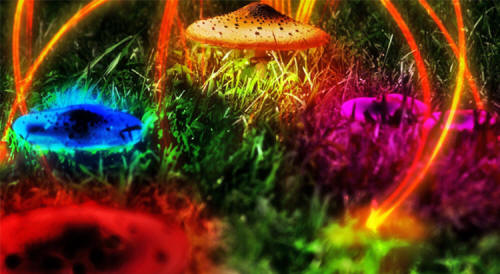|
|
|
May 12, 2015
That our indigenous ancestors were more connected to the earth than we are is not up for debate.
Also up for little debate is that the destruction of
our environment is increasing at an alarming rate, threatening the
premature extinction of our species, due to the modern way of life
in which humans live more on nature than with it. When we started
believing we could control life, we in many ways lost touch with the
innate wildness within ourselves and the world around us. Simply
put, we became less human.
As a result, the earth flourished. Many attribute
these enhanced levels of consciousness in which the world seemed
more alive and people believed there was no separation between
themselves and nature to the leap in consciousness provoked by
psychedelic plants, long hailed as "visionary plants."
Proof can be found at the Tassili Plateau in Southern Algeria.
Tassili Plateau looks almost like a maze of some sort, made out of stone escarpments chiseled by the wind into numerous narrow perpendicular corridors decorated with rock paintings of shamans dancing with psychedelic mushrooms in their hands and sprouting from their bodies.
The image of mushrooms sprouting from their bodies is often interpreted as a representation of their ability to enhance and emanate the spirit when ingested.
Terence Mckenna - The stoned ape theory
McKenna believed the evolutionary lineage of homo sapiens could be traced back to psychedelic mushrooms in the grasslands of Africa, claiming it acted as a,
Biochemical Relationship Between Psychedelic Plants and The Human Brain
Further fueling the idea that psychedelic plants play an important ecological and evolutionary role is the fact that psychedelic plants contain psychoactive chemicals that are strikingly similar to those found in the human brain, enabling them to act as synergetic keys that dissolve illusions of separateness from the natural world and other life forms, thereby restoring biochemical unity.
The
entheogenic chemicals in psychedelic plants
responsible for shifting a person's consciousness to reveal their
inextricable interconnectedness with nature are remarkably similar
to ones found in the human brain, such as
indoleamine neuro-hormones
like serotonin and melatonin regulate states of consciousness.
However, they do not activate all serotonergic receptors. Rather, they activate selective receptors in the brain to produce specific effects in the neural networks.
Although psychedelics, also known as "serotonergic neurognostics," have an impact on various 5-HT receptors, they have the greatest impact on 5-HT2a receptors, which are found throughout the human body.
Areas with high concentrations of 5-HT2a receptors, namely the gastrointestinal system, immune system, cardiovascular system, and the brain, are affected the most due to their intrinsic, overlapping biochemistry with the serotonergic activating nature of psychedelic plants.
In the brain the,
...are strongly affected, leading to alterations in hippocampal processing of sensory data and learning, altered gene expression, and heightened visual processing.
Essentially, sensory gating (discussed in this
previous article on
the doors of perception) is altered, allowing
more sensory input to reach consciousness.
It is hard to fathom that their remarkably similar biochemistry is of no importance on an ecological scale.
Clearly, we are not as "separate" from the natural
world and plants, such as psychedelics, as we may have been led to
believe...
Fantastic Fungi The Spirit of Good
We know you’re curious - Are we REALLY creating a film about mushrooms?
Fantastic Fungi - The Official Site for Everything Fungi
|


